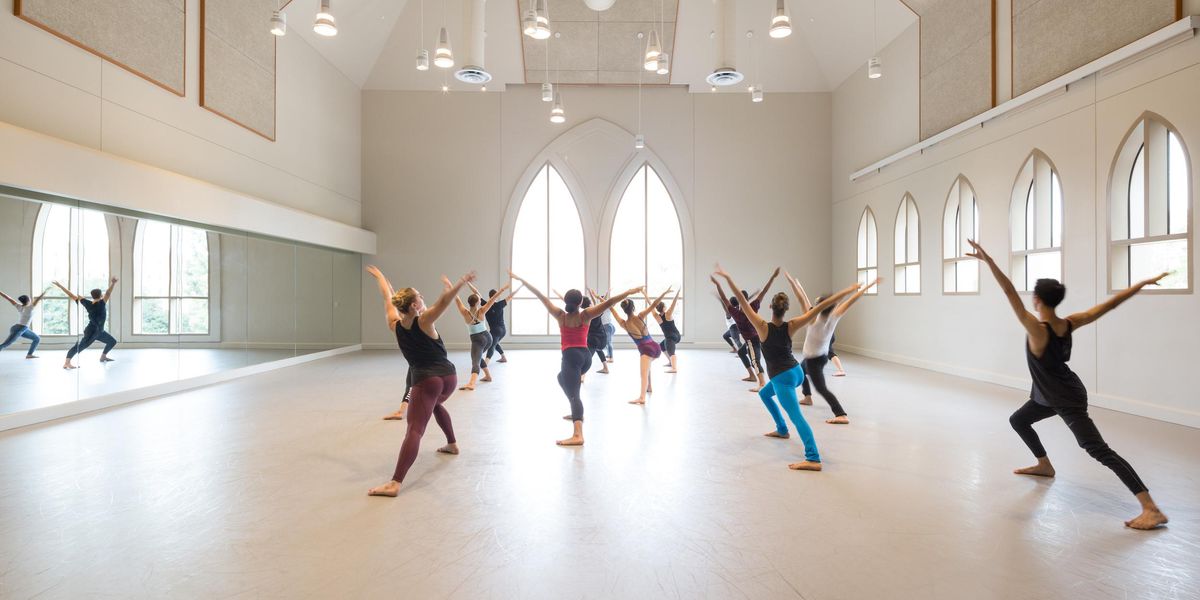The Street Beat
Holler choreographer Wayne Cilento tapped dancers and associates to give the show hip-hop cred.
Valentine Norton (center) and Saul Williams (left) in a company rehearsal. Photo by Kevin Thomas Garcia, Courtesy
Holler.
On paper, it’s a mismatch: A black artist whose provocative raps and violent death at 25 made him a hip-hop legend, and a Tony-winning 64-year-old white choreographer with a straight-arrow Broadway resumé.
But if you mention that Wayne Cilento might be seen as an off-the-wall choice to choreograph the Tupac Shakur musical Holler If Ya Hear Me, director Kenny Leon just laughs. “I like off-the-wall choices,” he says. And then he explains why he was actually being rather sensible when he tapped Cilento: “This is not a concert. It’s a musical. I wanted someone who was really skilled in musical staging.”
Holler
uses Shakur’s lyrics in a book-driven musical about a young man struggling to find a place for himself and his friends in a hard-luck community—in other words, a nontraditional traditional Broadway musical. And Cilento’s Broadway bona fides date all the way back to the original production of A Chorus Line—he was the first to sing “I Can Do That,” and then he went on to prove it, seesawing between performing and choreographing through the following decades. But he went into Holler with his eyes open, aware of what he could contribute and what he was lacking. To ensure that authentic hip-hop style would pervade both the details and the whole picture on Holler If Ya Hear Me, he hired master tapper Jared Grimes and Ioana Alfonso as his associates.
“He’s a hip-hop choreographer and Io is a concert dancer and does videos, so she’s involved with that world,” Cilento says. “And I have whatever I bring to the table. If I make up a combination, they interpret it and add that street flavor and that quality. Then it’s really about staging and choreographing everything. There are 47 transitions in the show, and they all dance.”
Having worked with both Michael Bennett and Bob Fosse, and choreographed to the music of both The Who (Tommy) and Stephen Schwartz (Wicked), Cilento says, “I’m not locked into a particular vocabulary or style every time I do a show. With my career, I have a variety of styles to draw from.” He points out that hip hop is itself an eclectic style: “There’s different specialties that people are experimenting with—I’m using all of that. It’s turned out to be really interesting and challenging and inspiring for me.”
Just as Leon had looked for a choreographer to complement his own skill set, Cilento looked for dancers whose credentials were the opposite of his own. “What I was really going for is the street element—a raw energy, an energy that wouldn’t be expected in a Broadway show. I look at them and go ‘Wow!’ to myself.”
Because the community is such an important element in the Holler story, Cilento says, “everybody has to do everything.” He favors the kind of seamless staging that doesn’t interrupt the plot to showcase dance for the sake of dance. “When you do a number, it should be an extension of what the scene was, what the song was saying. Then it turns into something choreographic, and then it goes back into the story.” So he lets the performers fill in the specifics. “I might say, ‘That’s amazing, but can you go low? How about getting on your knee there?’ It’s about making it artful.”
When he began working on the show’s final pre-Broadway workshop, a torn Achilles had Cilento dependent on crutches. “I was frustrated,” he recalls, “because I like getting on the floor, I like showing them. And I had to sit there and watch and try to explain from the chair. But you know what? I staged the whole show by just looking at it and explaining how I wanted things to be done. It was a big lesson for me.”
He gives the cast a lot of credit. “I always say that you’re only as good as the people on the floor,” he says. “Whatever they bring to the table we just mold to make it work in the show.”




